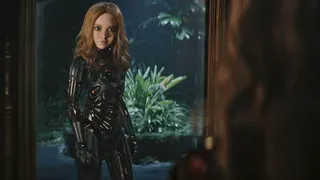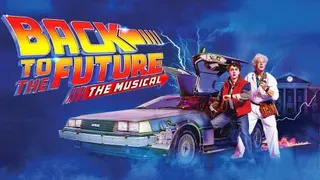July 6, 2010
A Single Man
Robert Nesti READ TIME: 3 MIN.
One of the happiest surprises of the films released last year was A Single Man, Tom Ford's subtle, ultra-stylish film version of Christopher Isherwood's 1964 novel. What made it surprising is the assured directorial debut of Ford, the American fashion designer best known for having turned around the flagging fortunes of Gucci in the 1990s and by starting a successful fragrance line. More recently he opened a small chain of specialty stores that use his name. Who knew that he was so adept behind the movie camera?
Working with David Scearce, Ford co-wrote a concise adaptation of Isherwood's novel, called by novelist Edmund White as "the first truly liberated gay novel in English." Set tin the midst of the Cuban missile crisis in 1962, Isherwood's story concerns George Falconer (Colin Firth), a middle-aged gay college professor grief-stricken over the death in an automobile accident some 18 months earlier of Jim (Matthew Goode), his younger lover. Haunted by memories (seen in flashbacks), George contemplates suicide, which he meticulously prepares to do that evening with a revolver. As he contemplates his suicide, George follows his daily routine - carefully dressing for work, teaching Aldous Huxley to his literature students, and having a liquor-soaked dinner with Charley (Julianne Moore), his oldest friend -- a glamorous British expatriate also at a crossroads in her life.
But not everything follows routine: a chance meeting with Carlos (Jon Kortajarena), a beautiful Spanish hustler touches him in unexpected ways; as does a series of recurring encounters with Kenny (Nicholas Hoult), one of his students who acts as either his stalker or guardian angel. There is a sexual charge to these meetings, but Ford carefully avoids the obvious subtexts, instead gives them a spiritual meaning - a way for Charlie to reconnect with a world he's given up in his grief.
What makes the film so poignant is how effectively Ford captures George's alienation - his sense of being an outsider - and how his everyday routine brings him back into the world. As Ford says in the excellent commentary available on the DVD, George realizes "the most important thing in life are the small things that we often overlook and the connections with other people is the thing that keeps most of us going."
That commentary also explains the reasoning behind the bold changes in color saturation, which move from washed-out to brilliant Technicolor within the same scenes; as well as Ford's choices in music, decor and fashion. (Kenny's pink mohair sweater required constant spraying with hairspray to keep its fresh look.) He also offers insights into how certain scenes were filmed, how he developed the intimacy between the actors and where he veered from Isherwood's original text.
Much of the film's power comes with Firth's deeply felt performance. Ford explains how he was often taken aback Colin Firth's ability to convey so much of Charlie's pain through his physical expressions. Nowhere is this better seen than a scene early in the film when he learns his partner has died in an automobile accident. The man's parents don't want to inform him, instead he gets a call from the dad man's brother who informs him that "the service is just for family." You can see he hurt, but also hear the decorum in his response - this is 1962, the era of the closet and all its implications.
Every element in the film, from the lush musical score (by Abel Korzeniowski and
Shigeru Umebayashi) and beautifully modulated cinematography (Eduard Grau) to the period production design (Dan Bishop) and costumes (Arianne Phillips), meld into an exquisite whole. The performances are first-rate. Julianne Moore is expressively over-the-top as Charlie, but never dissolves into camp; instead offers a precise portrait of a fading beauty unable to cope with middle age. The natural intimacy between Matthew Goode (as the dead Jim) and Firth is beautifully expressed in sparingly used flashbacks; and Nicholas Hoult charmingly captures Kenny's puppy dog charms. Though seen briefly, model Jon Kortajarena makes a considerable impression as Carlos.
Though the extras are few, they are excellent. Ford's intelligent commentary offers much insight in how he conceived the film and worked with his actors. The actors themselves also provide interesting commentaries on their characters in a 'making of' featurette. What would have been appreciated is a feature on Isherwood's life or one depicting gay life in the early 1960s; perhaps if a special edition is released, they will be included on that. Nonetheless the DVD release of this exceptional film is most welcome summer viewing.
Robert Nesti can be reached at [email protected].







